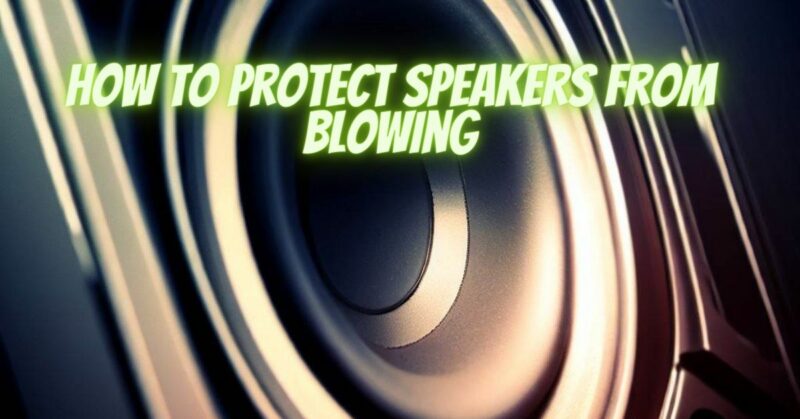Speakers are delicate components that can be susceptible to damage if not properly protected. Blowing a speaker occurs when excessive power or distorted signals cause the speaker to exceed its limits, resulting in permanent damage. To prevent this unfortunate situation and preserve the longevity of your speakers, this article provides essential tips on how to protect speakers from blowing.
- Match Amplifier Power and Speaker Ratings: Ensuring a proper match between your amplifier’s power output and the speaker’s power-handling capabilities is crucial. Exceeding the recommended power ratings of the speakers can lead to overheating and damage. Consult the specifications of both the amplifier and the speakers to ensure they are compatible and that the amplifier’s power output is within the speaker’s recommended range.
- Avoid Overdriving and Distorted Signals: Overdriving speakers with excessive volume or distorted signals can cause significant damage. Distorted signals contain harmonic content that can exceed the speaker’s capability, leading to speaker failure. To protect your speakers, avoid playing music at extremely high volumes or using amplifiers with distorted outputs. Opt for clean and undistorted audio signals to preserve the integrity of your speakers.
- Utilize Limiters and Protection Circuits: Some amplifiers and audio systems feature built-in limiters and protection circuits that can help safeguard the speakers. These systems detect and regulate excessive voltage or power, preventing the speakers from being overdriven or damaged. If your amplifier or audio system includes these features, activate and adjust them according to the manufacturer’s guidelines for optimal speaker protection.
- Implement a High-Quality Equalizer: Using a high-quality equalizer in your audio system can help manage and control the frequency response and dynamics of the audio signal. By carefully adjusting the equalizer settings, you can ensure that the audio signal does not contain excessive energy in specific frequency ranges that could damage the speakers. Fine-tuning the equalizer can help protect your speakers and optimize their performance.
- Monitor and Control Signal Levels: Regularly monitoring and controlling the signal levels can prevent unexpected spikes or excessive volumes that could damage the speakers. Use a sound level meter or audio monitoring software to keep track of the output levels and ensure they remain within safe limits. Be mindful of sudden increases in volume or prolonged periods of high volume to prevent speaker overload.
- Proper Speaker Placement: Proper speaker placement plays a role in protecting speakers from blowing. Position the speakers in a suitable location, following the manufacturer’s recommendations for optimal placement. Ensure that the speakers have adequate ventilation to dissipate heat generated during operation. Avoid placing the speakers in enclosed spaces or near heat sources, as excessive heat can damage the speaker components.
- Regular Maintenance and Inspection: Regular maintenance and inspection of your speakers can help identify any potential issues before they lead to speaker damage. Check the speaker cones, surrounds, and connections for signs of wear, damage, or loose connections. Clean the speakers regularly to prevent dust and debris buildup that can affect performance. Address any maintenance or repair needs promptly to protect the speakers from further damage.
Conclusion:
Protecting speakers from blowing requires careful attention to power matching, signal quality, limiters and protection circuits, equalization, signal monitoring, proper placement, and regular maintenance. By implementing these protective measures and following best practices, you can ensure that your speakers operate within safe limits, avoid excessive strain, and enjoy a long and reliable lifespan. Take proactive steps to safeguard your speakers, and they will reward you with faithful sound reproduction and years of listening pleasure.


